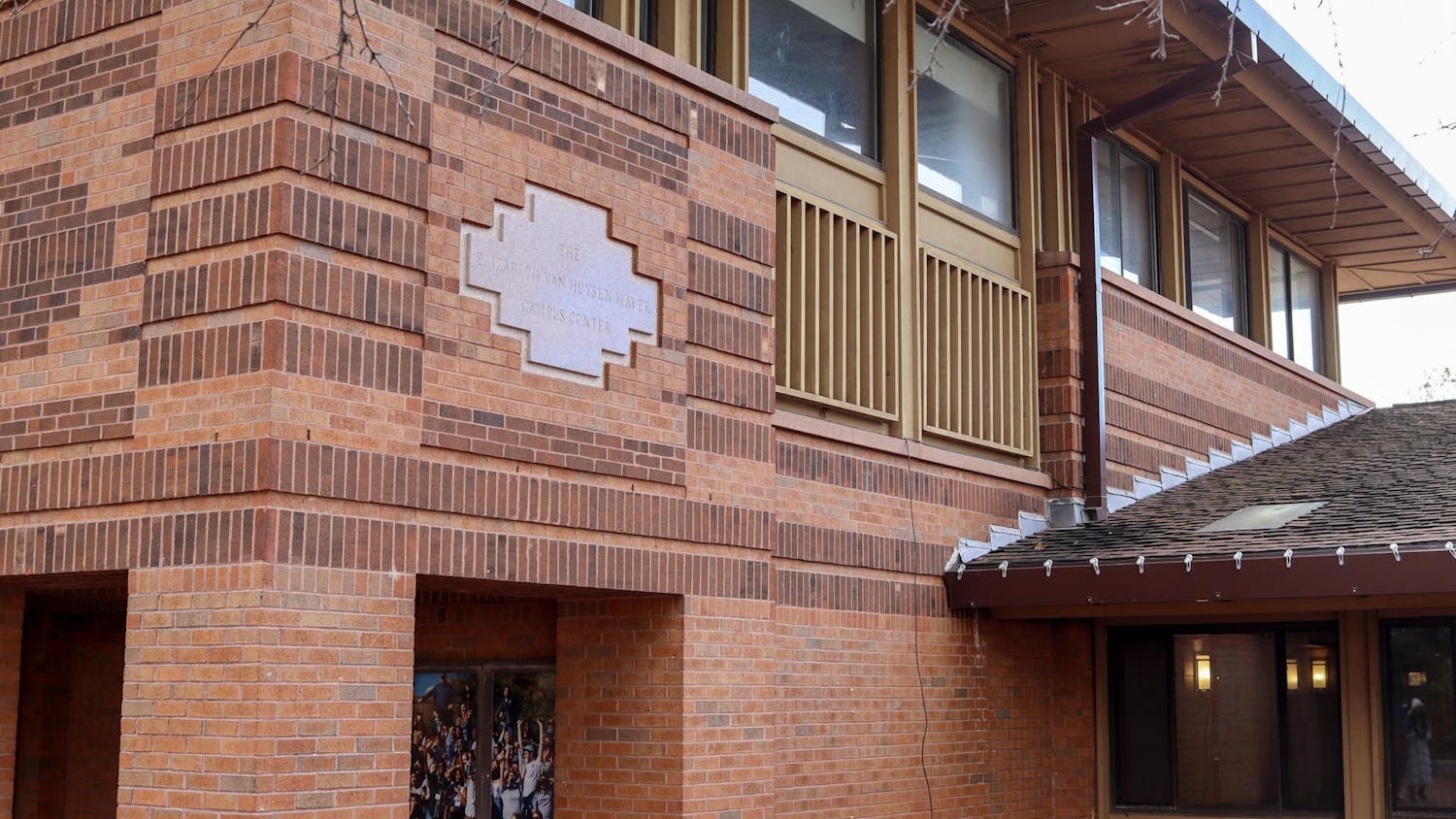The university launched a new Diversity and Inclusion siteon Monday, alongside introducing the newtufts.eduhomepage. The site includes an expansive “Diversity Dashboard” geared toward making university demographics more accessible to the Tufts community members and prospective students.
According to Jessica Sharkness, senior associate director of the Office of Institutional Research and Evaluation (OIRE) and co-chair of the Diversity and Inclusion Working Group (DIWG), the interactive dashboard uses graphics to display data on race/ethnicity and gender distribution of students at both the undergraduate and graduate levels, faculty and staff, broken down by school. It also provides information on students’ country/state of origin and graduation rates within four, five and six years of undergraduate students who enrolled at Tufts in 2009.
The dashboard currently displays data from the fall 2015 semester and will be updated annually with fall semester census information according to Sharkness, who focused on preparing data for the site and creating its visuals.
She explained that all information on the site has been gathered from initial data collection surveys on Tufts’ admissions and job applications, as well as through the Student Information System (SIS) and Oracle's PeopleSoft human resource system used by faculty and staff. Currently enrolled students can change their racial/ethnic identification at any time on SIS, as can faculty and staff members through PeopleSoft.
“This is not secret data,” Chief Diversity Officer and Associate Provost Mark Brimhall-Vargas said. “We’re trying to do it so you don’t have to do a lot of homework from year to year.”
While schools receiving federal aid are mandated to report certain demographic information, according to OIRE's website, relatively few universities release data in the visually-appealing way that the dashboard does, Sharkness said.
“I’m proud of the way we have made it more accessible,” she told the Daily in an email. “I believe our decision to include a full tally of all of the race/ethnicities that individuals selected as well as our commitment to making this information easily understood make us relatively unique.”
In addition to displaying demographic data as it is reported to the federal government through the Integrated Postsecondary Education Data System (IPEDS) — a series of surveys conducted by the U.S. Department of Education — the site allows users to view the data through a Tufts-specific system of reporting, Sharkness explained. Under the IPEDS method, individuals are recorded under one category, regardless of how many options they may have selected, so that the percentages of all categories amount to 100 percent. Tufts’ reporting system, which Sharkness refers to as the “all races selected” method, includes individuals under all the categories they have selected, allowing percentages to total to over 100 percent.
Brimhall-Vargas said he believes the second method is more informative, since the IPEDS system fails to identify the ethnicities of students who describe themselves as multiracial and groups all international students together without indicating their race.
“We want people to expect two kinds of reporting everywhere, so they can understand the complexities,” he said.
Brimhall-Vargas stressed that Tufts is not required to report additional information beyond that mandated by IPEDS surveys but has launched the dashboard to make the data more available for students.
“We believe that transparency conveys [that]; even if we’re not where we want to be, we know we’re not where we want to be, and we’re willing to actually tell you about our progress,” Brimhall-Vargas said. “We think that’s a message that’s significant.”
According to Sharkness, she and Brimhall-Vargas, along with the Assessment, Reporting and Dashboard sub-committee of the DIWG, have worked together since the beginning of the academic year to gather and organize data for the site, though the initial call for improved data transparency was part of the2013 Diversity Report.
Brimhall-Vargas and Sharkness said the site team has held multiple feedback sessions with the Tufts community members with at least three on the Medford/Somerville campus. These sessions have led to developments within the dashboard preceding its launch.
Alyssa Rivas, who attended a March 3 feedback session, said she was impressed by the dashboard’s breadth and the depth of thought that went into it, though she was initially skeptical about its function and how it would employ diversity markers and statistics.
“My suggestions focused on maintaining accuracy across all boards, mostly encouraging that ‘over-diverse’ photographs and language not be used in order to avoid deception of what the diversity representation really is at Tufts,” Rivas, a sophomore, told the Daily in an email.
Charlie Zhen, a first-year who also attended the March 3 session, said the dashboard represents a significant improvement from the data released earlier this year as part of the undergraduate admissions' accepted students profile, which he believed was misleading. The data on the admissions website — which appeared in the form of a graph that no longer appears online — gave percentages of first-generation college-bound students, foreign citizens, U.S. students of color and students receiving need-based aid but displayed the statistics on a bar graph that terminated at 40 percent, rather than 100 percent.
“I am happy to see that they are putting forth a great effort into making sure the information is presented as accurately as possible in a straightforward manner,” he told the Daily in an email.
Neither Rivas nor Zhen said they considered Tufts’ population demographics when they enrolled, though they have thought about this information since beginning school.
“[W]hen I arrived, I realized that the diversity statistics were misleading in some ways, and that has impacted my experience at Tufts,” Rivas said.
“I came here with no expectations, so demographics were not really involved in my thought process at the time,” Zhen said. “I knew the school was largely white, and I had to accept that.”
According to Sharkness, the feedback sessions also led the team to come up with plans for future changes to the site. For example, she and Brimhall-Vargas hope to expand and clarify the data on gender identification among students, faculty and staff, which currently breaks down into “Female,” “Male” and “Other.”
“[S]ome of the feedback we received on the current dashboard is that the term 'Other' is not very inclusive — it is 'othering,' Sharkness said. “We agree. The issue at the moment is that the option that several students selected actually says 'Other,' so we cannot be sure of what they intended by selecting it. We are hoping that the gender identity options [on] SIS will be expanded over time so that students will not need to select an 'Other' category to express their identity.”
The team is also looking to include more longitudinal data to track trends in race/ethnicity and gender demographics over time, according to Sharkness.
“[T]his is the number one enhancement to the dashboard that people have asked for in all of our feedback sessions, and I am working on some trend dashboards now,” she said.
Brimhall-Vargas hopes that students will be excited about the dashboard and will utilize it.
“What I want students to realize is this is a gold mine,” he said.
“My hope for the diversity dashboard is that it makes it easy for students, faculty, staff, alumni, prospective students and employees, the media, individuals from other institutions and the general public to understand our institution,” Sharkness said.
Brimhall-Vargas said he has reached out to administrators at other regional universities, namely Northeastern University’s Vice Provost for Institutional Diversity and Inclusion John Armendariz and Babson University’s Vice President of Human Resources and Chief Resources Officer Donna Bonaparte, in order to create a network of schools committed to launching similar sites.
“We have the sense that if we start to create a cluster of universities that start to release data in this very transparent way, its mere existence calls other universities to join,” he said. “My hope is that perspective students and their families, when they see what we provide, that they’ll ask other institutions, ‘Why don’t you provide that?’”
Brimhall-Vargas believes the new dashboard will make Tufts a frontrunner in higher education data transparency.
“No one does this,” he said. “We’re leading by example, and I’m excited to have Tufts be a leader.”
Tufts launches new 'Diversity Dashboard' to improve demographic transparency

Chief Diversity Officer and Associate Provost Mark Brimhall-Vargas fields questions at the "Diversity Dashboard" feedback session in the Campus Center Room 113 on March 3, 2016.





